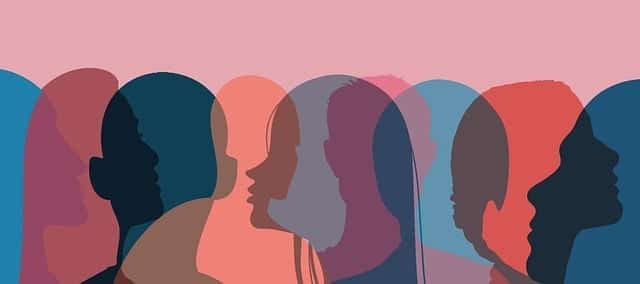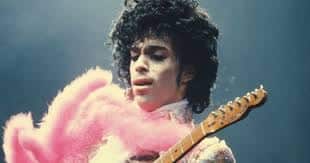
The gender binary doesn’t exist. Yes, there may be some factors that lead men to be more likely than women to have certain likes or dislikes, vice versa. However, the notion that everybody falls neatly into one of two boxes when it comes to gender identity, gender expression, or gender presentation is patently ridiculous. The mere existence of gender non-conforming people proves that everything about gender is socially constructed.
So, what does it mean to be gender nonconforming? What determines whether somebody is nonconforming, and who are some examples of gender nonconforming people? Let’s get into the topic of taking gender norms and turning them upside down.
Defining Gender Nonconformity
What is gender nonconformity? The term gender nonconformity refers to any action or thinking that leads a person to defy gender norms in some way. Gender nonconforming is used to describe people who upend expectations and gender roles by carving their own paths.
Gender nonconforming may include:
- Embracing non-traditional gender roles
- Wearing androgynous or other nonconforming clothing or hairstyles
- Enjoying hobbies and activities stereotypically associated with other gender identities
- Pursuing careers that are considered to be gender atypical
What Are Gender Norms?
Gender norms are rules and expectations that social groups set and enforce. They often communicate to people what they are or are not allowed to do based on their assigned birth sex. In some cases, legal or political entities also set and enforce gender norms.
Here are some examples of gender norms:
- A girl’s family discouraging her from playing what they perceive to be a “boy’s sport”.
- The city council in a small town passes a resolution banning cross dressing in public
- A teenage boy is mocked by his friends for wearing a pink shirt – a “girl’s color”
- The owner of a daycare center refuses to interview men for teacher positions because they say it’s weird for a guy to want that job
- Adolescent bullying among boys is seen as a rite of passage
- Segregating products or activities into male/female or man/woman categories for the purposes of gatekeeping
What is Gender Expression?
Gender identity is a subjective self-concept, a person’s deep sense of their own gender. Gender expression describes how a person presents themselves based on that identity. For example, women or femme-identifying transgender individuals might wear makeup if they perceive that to be an important part of their gender identity.
Gender expression can vary pretty widely. The way that people identify which forms of expression represent their gender may be influenced by:
- Their personal perceptions on what it means to be their gender and what is appropriate behavior
- One’s culture
- Family rules and guidance from relatives
- Religion
- Expectations set by friends and peers
- Laws and regulations
People who are gender nonconforming may be aware of the rules and expectations influencing gender expression. They make a conscious choice to ignore or rebel against these conventional norms.
What Are Gender Roles?
Gender roles are behavioral expectations set by society that determine what individuals should or should not do based on their sex assigned at birth. Gender roles influence gender expression and influence the experiences of both gender conforming and gender nonconforming people.
Like gender expression, different factors influence gender roles. Many cultures have very rigid expectations of what people can or cannot do based on gender, while others allow for much more freedom. Governments, family, religion, peers, and the individual’s internalized psychological experience all influence how we think about gender roles.
Part of gender nonconformity can include going against these established roles. Although, a person taking on a role that doesn’t align with gender expectations may not see themselves as gender nonconforming.

What is Gender Binary?
The gender binary is an outdated concept that gender identity is limited to just two choices, and that a person’s gender identity aligns with their assigned sex at birth. For example a person assigned male sex at birth can only grow up to have the gender of man or boy.
The American Psychiatric Association now recognizes a gender spectrum, and medical professionals now understand that while the two things may relate, biological sex is not the only influencer on gender identity. These professionals also understand that even biological sex categories can include a full range of primary and secondary traits with more variance happening within sex categories than between them. The binary designation also erases the existence of people who are intersex.
Further, the idea that gender identity is limited to man or woman is the height of cultural incompetence and white supremacy. Many cultures exist today and have existed throughout history that recognize forms of gender identity and expression that are outside the binary.
Gender Nonconforming Vs. Gender Identity
Gender identity is simply a person’s own perception of who they are. A person’s gender identity may be cisgender man, cisgender woman, transgender man, transgender woman, nonbinary, or something else. Not every person who is gender nonconforming is transgender. Likewise, there are transgender people who are very much gender conforming in that they dress, behave, and embrace the things that are traditionally associated with their gender identity.
Here’s an example. Brent, a cisgender man wears eyeliner and paints his nails. Despite the fact that his friends tell him it’s women’s work, Brent enjoys his job as a nurse. He has considered hyphenating his name with his fiance’s when they get married. He is a straight, cis man who is gender nonconforming based on his culture and the societal expectations that apply to him.
Here’s another example. Rebecca is a transgender woman. Her gender identity and gender expression align with the traditions of her family and community. She wears her hair long, puts on makeup daily, and chooses long flowing dresses that comply with her religion’s guidelines on modest dress for women. Rebecca is a transgender woman who is very gender conforming.
Finally, Jordan identies has nonbinary. They have an androgynous hairstyle and choose clothing that doesn’t neatly fit into one gender category or another. They do other things that go against conventional norms such as using nonbinary pronouns and refusing to be categorized when asked about their gender identity. Jordan engages in gender nonconformity both through their actions and their identity.
Famous Gender Nonconforming People
There are many gender noncorming people who have been widely admired by both old and young people. They are often seen as courageous, creative, and groundbreaking for their willingness to engage in gender non conformity. They encourage others to question gender expectations and gender stereotypes, and to live the way they prefer.
1. Prince (1958–2016)

Prince was unique in that he was both gender nonconforming while also being a decidedly hetero sex symbol. He regularly wore high heels, makeup, and flamboyant clothing. By blurring the lines between masulinity and femininity, he showed that a willingness to ignore gender norms in favor of creativity.
2. Marlene Dietrich (1901–1992)
A Hollywood icon, Marlene Dietrich was famous for dressing in tuxedos and suits during a time when women were expected to dress according to more traditional guidelines. She regularly played with masculine and feminine aesthetics both on and off-screen. Although she was someone whose gender identity likely aligned with her female sexuality, she was decidedly gender nonconforming.
3. David Bowie (1947–2016)
Bowie’s alter ego Ziggy Stardust was a clear example of his gender nonconforming nature. Even after Stardust was no longer a part of his persona, Bowie continued wearing makeup and donning flamboyant outfits. Over the years, his artistry rejected traditional gender roles, and showed that self expression shines when subjective self concept deviates from societal expectations.
4. Gladys Bentley (1907–1960)
Bentley was a gender nonconforming blues singer and performer during the Harlem Renaissance, Gladys Bentley defied gender norms by wearing tuxedos and openly singing about relationships with women. She challenged ideas of femininity at a time when gender roles were rigidly enforced.
5. Tilda Swinton (1960–Present)
Tilda Swinton has been gender nonconforming both on and off screen. She has played both male and female roles. Swinton has also become known for her gender neutral fashion choices which demonstrates how an individual’s appearance can be used as a form of gender expression.
6. Little Richard (1932–2020)
The rock ‘n’ roll pioneer went against the gender norms of the 1950s, and continued that self expression until his death. His gender nonconforming choices were reflected in his clothing, makeup, and stage presence.
7. Billy Porter (1969–Present)
An actor and fashion icon, Billy Porter is known for his stunning red carpet looks that combine elements that people associate with both male and female. He uses his platform to challenge rigid gender expectations in the entertainment industry. Porter is also a transgender advocate.
8. Radclyffe Hall (1880–1943)
The British author of The Well of Loneliness, Radclyffe Hall wore tailored suits, had a masculine presentation, and openly defied gender norms. Their work and life were key in early LGBTQIA+ representation. Sadly, while Hall is celebrated today, their gender nonconforming presentation and defiance of norms had a negative impact on their career when they were alive.
9. Grace Jones (1948–Present)
Singer, model, and actress Grace Jones has long defied gender expectations with her striking androgynous appearance, bold fashion choices, and commanding presence. She embraced both masculinity and femininity, making her a cultural icon.
Myths About Gender Nonconforming People
Gender nonconformity refers to the various ways that people express themselves that don’t align with societal expectations based on their assigned gender at birth. There are several misconceptions about gender nonconforming people. Many of these are fueled by misinformation and false assumptions. Here are a few of the most common myths about folks who are gender nonconforming.
Gender Nonconformity Is the Same as Being Transgender
Some transgender people are also gender noncorming, but not all gender nonconforming people identify as nonbinary, transgender or gender fluid. Gender nonconformity is a broad term that is used to describe individuals who engage in gender identity and expression that don’t align with traditional sex roles or expectations. It is quite common for a gender nonconforming person to identify with their gender assigned at birth. They simply express themselves in a way that doesn’t conform to societal norms.
Gender Nonconforming People Have Gender Dysphoria
The Diagnostic And Statistical Manual (DSM-5) refers to gender dysphoria as distress caused by a lack of alignment between a perosn’s gender identity and their gender assigned at birth. Not all gender nonconforming people experience gender dysphoria. It is possible to be gender nonconforming and be fully comfortable with the individual’s appearance, all while not conforming to traditional sex roles.
Gender Nonconformity Is Just a Phase in Childhood
While childhood gender noncormity is common, it’s important not to dismiss this as just a phase or minimize a child’s feelings. It is very possible to have very valid and lasting feelings about one’s gender identity from a young age. A gender nonconforming child may or may not decide to conform to more traditional gender roles in early adulthood. Llikewise, gender nonconforming behavior in childhood may or may not indicate the child is questioning their gender identity.
Additionally, gender nonconforming children may face bullying, victimization, and societal pressure to engage in behavior that aligns with gender expectations. These questioning youth may opt to ignore their subjective self concept as a survival mechanism, but embrace gender nonconformity as young adults. This may lead to future conflict and disappointment with parents or guardians who assumed the being gender nonconforming was simply a childhood phase.
Gender Nonconformity Is Always Related to Sexual Orientation
Gender nonconformity is not necessarily related to sexual orientation. A gender nonconforming person can be straight, bisexual, gay, elsbianm or asexual. While there is certainly anecdotal evidence that early childhood gender nonconformity can indicate queerness, that is not an absolute. Sexual behavior and identity are separate from a person’s gender identity and expression.
Gender Nonconforming People Struggle With Their Mental Health
While the American Acad Child Adolesc Psychiatry (AACAP) recognizes that gender nonconforming, queer, or transgender youth are at increased risk of depressive symptoms or suicidal ideation, these issues are caused by social stigma rather than any organic mental health disorder. We know that gender nonconforming individuals who receive support, affirmation, and access to sexual and reproductive health resources have significantly improved well-being.
Gender Nonconformity is a Fixed Concept
Is gender fluid? The answer is yes. Because of that, the concept of gender conformity must also be fluid. Despite this, many people believe that individuals who were considered to be gender nonconforming in the past would be nonconforming today as well. That’s just not true. Not only do societal expectations and norms around gender evolve over time, but these norms also vary from one culture to another. There’s also the influence of family, religion, and the individual’s internalized psychological experience.
Gender nonconformity is simply a part of human development for many people. It’s important to break down myths to create better understanding. A big part of this is seeing gender nonconformity as an umbrella term that covers a wide range of experiences, behaviors, and activities. By recognizing this, we can gain a better understanding of gender nonconforming and gender fluid individuals.
Compulsory Gender Conformity
The concept of compulsory heterosexuality states that people are taught from birth that heterosexuality is the default and preferred state. Anything else is a subjective self concept deviating from that norm. It is important to understand that this is just a part of a larger framework that props up societal patriarchy and furthers rhetorical goals that can only be accomplished if people conform with expectations that are imposed on them.
Compulsory heterosexuality is part of a white, Judeo-Christian, point of view that also intersects with gender, reproductive choice, and racial justice. Compulsory gender conformity is simply another way of marginalizing people who are gender nonconforming to push forward those rhetorical goals.
Exploring Your Gender Expression And Identity
You don’t need to be transgender to reflect on your identity and choices in gender expression. In fact, by doing so, you can become more comfortable and confident in who you are and how you present yourself.





